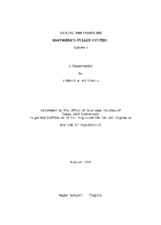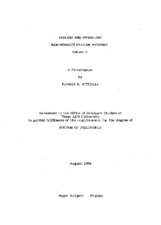| dc.description.abstract | Eight years after Margaret Fuller's death and just after hearing gossip about the "boor," the "hymen," that he called her "clownish husband," Nathaniel Hawthorne confronted directly for the first time the "riddle" of Fuller's character. The "solution," he decided as he wrote in his notebook, was that she had suffered a "total collapse ... morally and intellectually." When Julian Hawthorne published in 1884 his father's extensive description of Fuller's "defective and evil nature," he repositioned his father in American literary history as a champion of antifeminist domestic values, and he destroyed Fuller's reputation. If Julian succeeded in "veiling" Hawthorne's complex attitudes toward Fuller in an ideologically-charged, reductive animosity, this study attempts to "unveil" Hawthorne's ambivalent relationship with Fuller by examining it more thoroughly than has heretofore been attempted. "There never was such a tragedy as her whole story," Hawthorne claimed in 1858, but as this study demonstrates, the narrative of Fuller's fall inscribed bitterly in that notebook entry was neither his first nor last revision of the tragedy he wrote her life to be. Quite simply, Fuller had disturbed Hawthorne for a very long time, disturbed him so much that he wrote some of his most powerful fictions in an attempt to resolve the "riddle" of his ambivalent, powerful attraction to her--"Rappaccini's Daughter," The Scarlet Letter, The Blithedale Romance, The Marble Faun. She was more than simply a partial "model" for the most complex and provocative women characters in his fiction, as critics have occasionally proposed; she was the origin of their very conception, the problem at their heart that Hawthorne could best confront and attempt to resolve through the privacy and the control provided by the veiled allegories of narrative representation. Hers was the voice that Hawthorne continued to hear and respond to in the literary dialogue that he continued with her after their friendship was interrupted in 1844, after even, long after, her death. | en |



